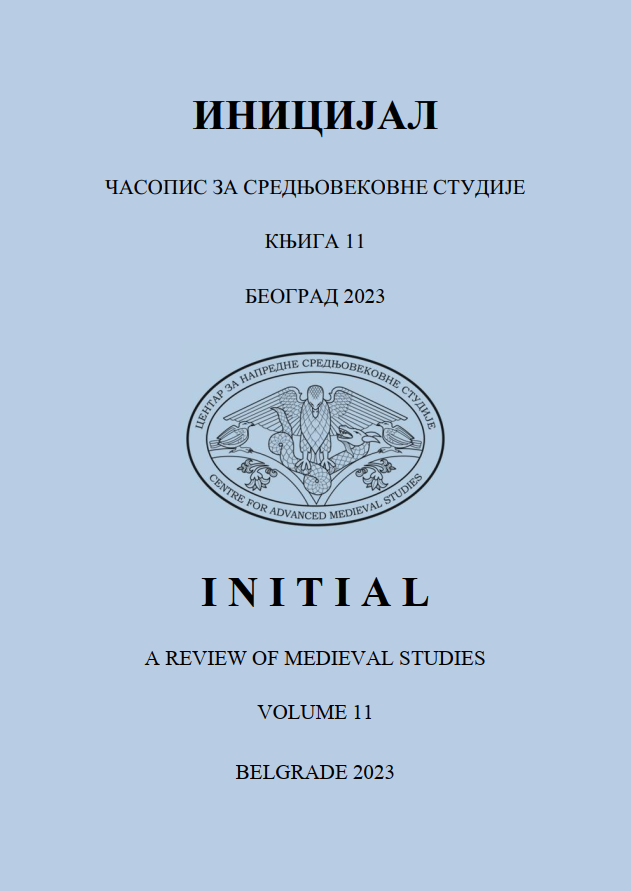СРПСКО-УГАРСКИ ОДНОСИ (1403/1404–1427) У ДЕЛИМА ЗАПАДНОЕВРОПСКИХ ПИСАЦА XV ВЕКА
THE RELATIONS BETWEEN SERBIA AND HUNGARY (1403/1404–1427) IN THE WORKS OF WESTERN EUROPEAN WRITERS OF THE 15TH CENTURY
Author(s): Marko GavrilovićSubject(s): History, Middle Ages, 15th Century
Published by: Центар за напредне средњовековне студије
Keywords: Despot Stefan Lazarević; King Sigismund of Luxembourg; Serbian-Hungariаn relations; Western European writers
Summary/Abstract: At the beginning of the 15th century, a new phase emerged in the relations between Serbia and Hungary. More precisely, at the beginning of 1404, Despot Stefan Lazarević became a vassal of the Hungarian king Sigismund of Luxembourg. Certain aspects of these relations were noted by some Western European writers of the 15th century. Primarily, they originated from the lands, which were under the actual or nominal rule of King Sigismund. However, some reports can also be found among authors from countries that closely followed the events in the Kingdom of Hungary, such as Poland and Burgundy. Contemporary writers, such as the Anonymous Continuator of the Chronik des Landes Preussen by Johann von Posilge, as well as Eberhard Windeck, recognized a shift in the foreign policy course of Despot Stefan. Windeck, a close associate of King Sigismund, provided valuable insights into the relations between the two rulers. His reports attest about reputation of Despot Stefan as a Hungarian baron, but also obligations he had as a Hungarian vassal. Brief accounts of this can also be found in the writings of other authors, like the Bavarian chronicler Andreas of Regensburg and the Аnonymous author of the Zipser Chronik. In this paper, we also analyzed the data provided by Western writers about the events following the death of Despot Stefan Lazarević (July 19, 1427). Their focus lies on the question of handover of Belgrade to Hungary, as well as the fall of Golubac Fortress under the Ottoman Turks. Although their reports overlap to some extent, significant differences are also visible between them. For example, the Polish chronicler Jan Długosz blamed King Sigismund for the fall of Golubac Fortress, while the Burgundian knight Bertrandon de la Broquière attributed it to the Despot Đurađ Branković, Stefan’s successor. Also, according to Broquière, Despot Đurađ ceded Belgrade to the King Sigismund, out of necessity, while the Hungarian chronicler János Thuróczy, represented it through the ideal senior-vassal bond.
Journal: Иницијал. Часопис за средњовековне студије
- Issue Year: 2023
- Issue No: 11
- Page Range: 165-188
- Page Count: 24
- Language: Serbian

